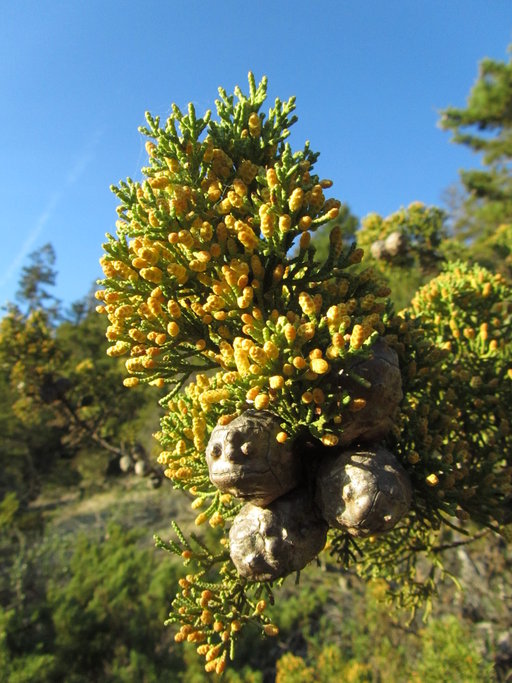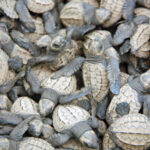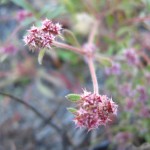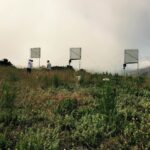
Rare plant treasure hunters in the Klamath Mountains
© 2011 Carol Ralph
On African savannas, poachers have forced black rhinos nearly to extinction. Closer to home, poaching, poisoning and habitat loss threaten California condors. Yet nearly 60 percent of all endangered species in California are plants.
With more than 6,000 native plant species, the Golden State is so rich that Conservation International calls it a biodiversity hotspot. To document and preserve the state’s plant assets, the botanists and citizen scientists of the California Native Plant Society go on rare plant treasure hunts. To get a feel for both the tedium and the thrill of a hunt, watch Rina Shaikh-Lesko’s delightful video.
Around 2,300 of the state’s native species are rare enough to appear in the CNPS Inventory of Rare and Endangered Plants. But only 220 of these are officially designated as rare, threatened or endangered under state or federal law. So the CNPS inventory fills the gap.
The California Environmental Quality Act, a landmark law passed in 1970 on the heels of the National Environmental Policy Act, requires state and local agencies to identify the potential environmental impacts of actions such as new building projects, and to prevent these impacts when possible.
Jeb Bjerke, an environmental scientist who manages the native plant program for the California Department of Fish and Wildlife, said the inventory helps his agency to recognize plant species that merit consideration under CEQA. “It really is a way for us to protect rare, threatened and endangered plants that have not been officially listed by the state through CEQA,” said Bjerke. “So that inventory is very important for native plant protection in the state.”
For the rare plant treasure hunters, stalking scarce species in deep wilderness or scattered parcels of private land is hard enough. But add to this mix the challenge of shifting taxonomy, and you’ve got a real mess.
Taxonomy, the science of classification, has come a long way since Carl Linnaeus divided the natural world into three kingdoms—animal, plant and mineral. Thanks to Darwin’s influence, botanists began to systematically compare the anatomies of related plants to understand their evolutionary relationships. Now, for finer resolution and accuracy, they routinely compare DNA sequences.
Botanists sort plants into species, or groups of plants that can interbreed. Species can be further divided into subspecies or varieties; these groups grow too far away from each other to interbreed and usually differ in subtle ways.
Ever more careful analyses of plants’ anatomy, chemistry, and genetics lead to changes in what’s considered a species or subspecies. Sometimes new information reveals that a rare treasure is the same subspecies as something more common—an everyday gem. On the other hand, close observation may expose a hidden treasure, a population of plants different enough from their estranged sisters to be considered a separate species or subspecies.
These cases of lumping and splitting—fancy taxonomy lingo, evidently coined by Darwin himself—affect how the California Native Plant Society ranks plants by rarity. Here are two examples.

Coyote mint
Monardella villosa subspecies villosa
Henry W. Coe State Park, Santa Clara County
© 2009 Barry Breckling
Lumped: Coyote mint (Monardella villosa)
This purple-flowered mint peppers coastal mountains throughout Central and Northern California. Also cultivated as an ornamental, it’s a great “butterfly magnet,” according to Deborah Small’s Ethnobotany Blog, and its tea can relieve a stomachache.
Monardella villosa subspecies globosa was once classified as a shade-loving Alameda County subspecies distinct from subspecies villosa, distinguished by scanter hairs (villosa is Latin for “velvety” or “shaggy”) and by larger stems, leaves and flowers. But botanists decided subspecies globosa was really just the same variety growing a little differently in the shade, and lumped it into the subspecies villosa. Since villosa is actually quite common, globosa lost its protection as a rare plant.
Split: Butano Ridge and Santa Cruz cypresses (Hesperocyparis abramsiana varieties abramsiana and butanoensis)
Both anatomical and genetic differences recently exposed these two divergent varieties. Hesperocyparis abramsiana has been on the federal endangered species list since 1987, but now CNPS recognizes that each variety is even scarcer than previously thought. Treasure hunters found variety abramsiana in only 10 locales in the Santa Cruz Mountains, while variety butanoensis makes its exclusive home on Butano Ridge in San Mateo County.
Topping out at a height of 25 feet, these evergreen cypresses are dwarfed by their redwood neighbors. The two varieties differ in the chemical structures of terpenoids, aromatic compounds in their leaves (think of a cedar scent), and the Santa Cruz variety has shorter, narrower cones.
Since the Butano Ridge cypress grows mainly in Pescadero Creek County Park, it’s well protected, but could be in danger due to fire suppression—fire helps release cypress seeds. The Santa Cruz variety is more of a concern, since it dwells largely on private land, where it can interbreed with related garden trees, jeopardizing its genetic integrity.
As long as botanists keep remodeling plant relationships, their lumps and splits will inform California’s treasure hunters, and may ultimately affect how we conserve the state’s biodiversity. As if their inherent beauty were not enough, rare plant treasures support robust ecosystems, and some even contain medicinal compounds that can help us humans protect our health. CNPS botanist Aaron Sims believes conserving plant life is vital to our own future prospects. “The more biodiversity we are able to maintain through sustainability,” said Sims, “the longer our survival on this planet.”








Comments are closed.